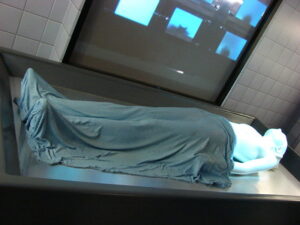Recently, I was looking at income data, and ran across a few tables that show the distribution of income and wealth. There are many ways to define both “income” and “wealth,” but for those who don’t have either high income or a great deal of wealth, life can be excruciatingly difficult. That’s something that some WCC Trustees seem to have missed.
The pandemic has wreaked havoc on household income in the United States. While the pandemic has negatively affected many higher-tier wage earners, the lowest-wage earners have been hit hardest. According to the Bureau of Labor Statistics, the September unemployment rate in the US was 7.9%. In Michigan, preliminary September unemployment data show an unemployment rate of 8.5%.
Low-wage earners congregate in a few key sectors of the economy. The Leisure and Hospitality industry, which includes restaurants and bars, shows a year-over-year employment decline of more than 33%. Manufacturing employment is down 9.7%. Trade, Transportation and Utilities employment declined by 4.7%, compared to this time last year. Employment in “other services” declined by 11.1%.
WCC Trustees don’t understand students’ economic challenges
These “figures” represent people who have lost their jobs in the last year, largely due to the pandemic. In a traditional economic downturn, they would be the people who would likely end up in a community college classroom. But we’re not in the middle of an ordinary downturn. Higher education institutions have moved forward by putting their classes online.
Unfortunately, our unemployed neighbors may not have the computer equipment, Internet access, or technical skills to participate in online classes. Adult learners who may not have been in a classroom in years, may not be comfortable with taking classes online. Or being in a classroom at all. And they may not have the financial resources to get back in the game.
Financial aid (including student loans) may enable people to get back into the classroom, but US students (and former students) already owe more than $1T in student loan debt. People without jobs, or with minimal household income may not be able to take on debt. Older workers will certainly have less time to repay student loans and recover from the loss of employment and assets.
Most American “wealth” isn’t cash
The wealth tables I was looking at pointed out one really startling piece of information. The majority of Americans’ “wealth” is actually the equity in their homes. And, as the Great Recession pointed out, home equity is only wealth-on-paper. It’s also easy to lose. And you can’t easily convert it to cash in a poor economy.
Workers under the age of 35 have very little wealth. First, most of their net worth is in cash. Second, they’re often so laden with debt that they cannot afford to buy a home. No home = no home equity = lower net worth. After age 35, workers can begin to amass wealth in the form of home equity, but they still lack – you know – actual money. Most people don’t accumulate significant net worth (in cash) until they’re in their mid-50’s.
That.
That’s why statements from WCC Trustees like, “Where are we going to lose them to?” and defending a 10% increase in tuition as not being a “break-the-bank” issue are truly horrifying. Especially when they want such a large tuition (or fee) increase to patch holes in the operating budget caused by their own poor oversight. Especially when they want to divert community-sourced education dollars to build a hotel.
Community college students aren’t wealthy. They may possibly be in the top 50% of earners in the US, but you only need to bring home about $12 per hour (full-time) to fit into that bracket. So, a $10 per credit hour increase for a student who earns only $12 per hour could be devastating.
Why have a community college that doesn’t serve the community?
The goal of a community college is to liberate people from living on the margins. We built WCC to free people from an unending cycle of debt and dependency. And WCC is now being run by people who think it is better to shop off the cost of bad management on the students than it is to perform the work WCC Trustees were elected to do.
A WCC Trustee’s job is to provide oversight. They work for the taxpayers.
ONLY.
WCC Trustees do not work for the College Administration. In fact, they owe nothing to the College Administration. How the WCC Trustees have become so confused about where their duty of loyalty lies is rather mysterious. It honestly deserves closer inspection because we- the taxpayers – deserve an explanation for that.
To correct this, we must elect only Trustees who prioritize the desires of the community and the needs of the students above those of the Administration. We need to re-establish control of WCC’s runaway Board of Trustees. It starts with knowing who the candidates are. Their voting records clearly indicate where their loyalties lie.
WCCWatch: Martin Thomas | WCCWatch: David DeVarti | WCCWatch: Christina Fleming | WCCWatch: Ruth Hatcher
Photo Credit: 401(k) 2012, via Flickr
























